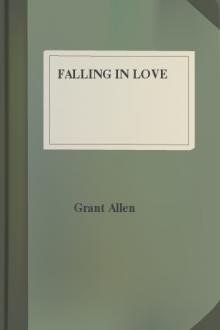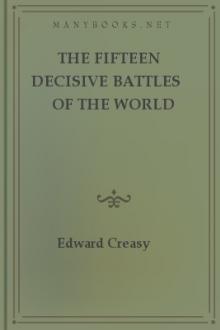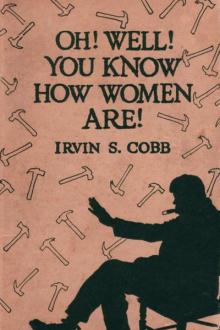Falling in Love by Grant Allen (different e readers .txt) 📕

- Author: Grant Allen
- Performer: -
Book online «Falling in Love by Grant Allen (different e readers .txt) 📕». Author Grant Allen
Toads themselves are well known to possess all the qualities of mind and body which go to make up the career of a successful and enduring anchorite. At the best of times they eat seldom and sparingly, while a forty days' fast, like Dr. Tanner's, would seem to them but an ordinary incident in their everyday existence. In the winter they hibernate by burying themselves in the mud, or by getting down cracks in the ground. It is also undoubtedly true that they creep into holes wherever they can find one, and that in these holes they lie torpid for a considerable period. On the other hand, there is every reason to believe that they cannot live for more than a certain fixed and relatively short time entirely without food or air. Dr. Buckland tried a number of experiments upon toads in this manner—experiments wholly unnecessary, considering the trivial nature of the point at issue—and his conclusion was that no toad could get beyond two years without feeding or breathing. There can be very little doubt that in this conclusion he was practically correct, and that the real fine old crusted antediluvian toad-in-a-hole is really a snare and a delusion.
That, however, does not wholly settle the question about such toads, because, even though they may not be all that their admirers claim for them, they may yet possess a very respectable antiquity of their own, and may be very far from the category of mere vulgar cheats and impostors. Because a toad is not as old as Methuselah, it need not follow that he may not be as old as Old Parr; because he does not date back to the Flood, it need not follow that he cannot remember Queen Elizabeth. There are some toads-in-a-hole, indeed, which, however we may account for the origin of their legend, are on the very face of it utterly incredible. For example, there is the favourite and immensely popular toad who was extracted from a perfectly closed hole in a marble mantelpiece. The implication of the legend clearly is that the toad was coeval with the marble. But marble is limestone, altered in texture by pressure and heat, till it has assumed a crystalline structure. In other words we are asked to believe that that toad lived through an amount of fiery heat sufficient to burn him up into fine powder, and yet remains to tell the tale. Such a toad as this obviously deserves no credit. His discoverers may have believed in him themselves, but they will hardly get other people to do so.
Still, there are a great many ways in which it is quite conceivable that toads might get into holes in rocks or trees so as to give rise to the common stories about them, and might even manage to live there for a considerable time with very small quantities of food or air. It must be remembered that from the very nature of the conditions the hole can never be properly examined and inspected until after it has been split open and the toad has been extracted from it. Now, if you split open a tree or a rock, and find a toad inside it, with a cavity which he exactly fills, it is extremely difficult to say whether there was or was not a fissure before you broke the thing to pieces with your hatchet or pickaxe. A very small fissure indeed would be quite sufficient to account for the whole delusion; for if the toad could get a little air to breathe slowly during his torpid period, and could find a few dead flies or worms among the water that trickled scantily into his hole, he could manage to drag out a peaceful and monotonous existence almost indefinitely. Here are a few possible cases, any one of which will quite suffice to give rise to at least as good a toad-in-the-hole as ninety-nine out of a hundred published instances.
An adult toad buries himself in the mud by a dry pond, and gets coated with a hard solid coat of sun-baked clay. His nodule is broken open with a spade, and the toad himself is found inside, almost exactly filling the space within the cavity. He has only been there for a few months at the outside; but the clay is as hard as a stone, and to the bucolic mind looks as if it might have been there ever since the Deluge. Good blue lias clay, which dries as solid as limestone, would perform this trick to perfection; and the toad might easily be relegated accordingly to the secondary ages of geology. Observe, however, that the actual toads so found are not the geological toads we should naturally expect under such remarkable circumstances, but the common everyday toads of modern England. This shows a want of accurate scientific knowledge on the part of the toads which is truly lamentable. A toad who really wished to qualify himself for the post ought at least to avoid presenting himself before a critical eye in the foolish guise of an embodied anachronism. He reminds one of the Roman mother in a popular burlesque, who suspects her son of smoking, and vehemently declares that she smells tobacco, but, after a moment, recollects the historical proprieties, and mutters to herself, apologetically, 'No, not tobacco; that's not yet invented.' A would-be silurian or triassic toad ought, in like manner, to remember that in the ages to whose honours he aspires his own amphibian kind was not yet developed. He ought rather to come out in the character of a ceratodus or a labyrinthodon.
Again, another adult toad crawls into the hollow of a tree, and there hibernates. The bark partially closes over the slit by which he entered, but leaves a little crack by which air can enter freely. The grubs in the bark and other insects supply him from time to time with a frugal repast. There is no good reason why, under such circumstances, a placid and contented toad might not manage to prolong his existence for several consecutive seasons.
Once more, the spawn of toads is very small, as regards the size of the individual eggs, compared with the size of the full-grown animal. Nothing would be easier than for a piece of spawn or a tiny tadpole to be washed into some hole in a mine or cave, where there was sufficient water for its developement, and where the trickling drops brought down minute objects of food, enough to keep up its simple existence. A toad brought up under such peculiar circumstances might pass almost its entire life in a state of torpidity, and yet might grow and thrive in its own sleepy vegetative fashion.
In short, while it would be difficult in any given case to prove to a certainty either that the particular toad-in-a-hole had or had not access to air and food, the ordinary conditions of toad life are exactly those under which the delusive appearance of venerable antiquity would be almost certain frequently to arise. The toad is a nocturnal animal; it lives through the daytime in dark and damp places; it shows a decided liking for crannies and crevices; it is wonderfully tenacious of life; it possesses the power of hibernation; it can live on extremely small quantities of food for very long periods of time together; it buries itself in mud or clay; it passes the early part of its life as a water-haunting tadpole; and last, not least, it can swell out its body to nearly double its natural size by inflating itself, which fully accounts for the stories of toads being taken out of holes every bit as big as themselves. Considering all these things, it would be wonderful indeed if toads were not often found in places and conditions which would naturally give rise to the familiar myth. Throw in a little allowance for human credulity, human exaggeration, and human love of the marvellous, and you have all the elements of a very excellent toad-in-the-hole in the highest ideal perfection.
At the same time I think it quite possible that some toads, under natural circumstances, do really remain in a torpid or semi-torpid condition for a period far exceeding the twenty-four months allowed as the maximum in Dr. Buckland's unpleasant experiments. If the amount of air supplied through a crack or through the texture of the stone were exactly sufficient for keeping the animal alive in the very slightest fashion—the engine working at the lowest possible pressure, short of absolute cessation—I see no reason on earth why a toad might not remain dormant, in a moist place, with perhaps a very occasional worm or grub for breakfast, for at least as long a time as the desert snail slept comfortably in the British Museum. Altogether, while it is impossible to believe the stories about toads that have been buried in a mine for whole centuries, and still more impossible to believe in their being disentombed from marble mantelpieces or very ancient geological formations, it is quite conceivable that some toads-in-a-hole may really be far from mere vulgar impostors, and may have passed the traditional seven years of the Indian philosophers in solitary meditation on the syllable Om, or on the equally significant Ko-ax, Ko-ax of the irreverent Attic dramatist. "Certainly not a centenarian, but perhaps a good seven-year sleeper for all that," is the final verdict which the court is disposed to return, after due consideration of all the probabilities in re the toad-in-a-hole.
A FOSSIL CONTINENTIf an intelligent Australian colonist were suddenly to be translated backward from Collins Street, Melbourne, into the flourishing woods of the secondary geological period—say about the precise moment of time when the English chalk downs were slowly accumulating, speck by speck, on the silent floor of some long-forgotten Mediterranean—the intelligent colonist would look around him with a sweet smile of cheerful recognition, and say to himself in some surprise, 'Why, this is just like Australia.' The animals, the trees, the plants, the insects, would all more or less vividly remind him of those he had left behind him in his happy home of the southern seas and the nineteenth century. The sun would have moved back on the dial of ages for a few million summers or so, indefinitely (in geology we refuse to be bound by dates), and would have landed him at last, to his immense astonishment, pretty much at the exact point whence he first started.
In other words, with a few needful qualifications, to be made hereafter, Australia is, so to speak, a fossil continent, a country still in its secondary age, a surviving fragment of the primitive world of the chalk period or earlier ages. Isolated from all the remainder of the earth about the beginning of the tertiary epoch, long before the mammoth and the mastodon had yet dreamt of appearing upon the stage of existence, long before the first shadowy ancestor of the horse had turned tail on nature's rough draft of the still undeveloped and unspecialised lion, long before the extinct dinotheriums and gigantic Irish elks and colossal giraffes of late tertiary times had even begun to run their race on the broad plains of Europe and America, the Australian continent found itself at an early period of its development cut off entirely from all social intercourse with the remainder of our planet, and turned upon itself, like the German philosopher, to evolve its own plants and animals out of its own inner consciousness. The natural consequence was that progress in Australia has been absurdly slow, and that the country as a whole has fallen most woefully behind the times in all matters pertaining to the existence of life upon its surface. Everybody knows that Australia as a whole is a very peculiar and original continent; its





Comments (0)